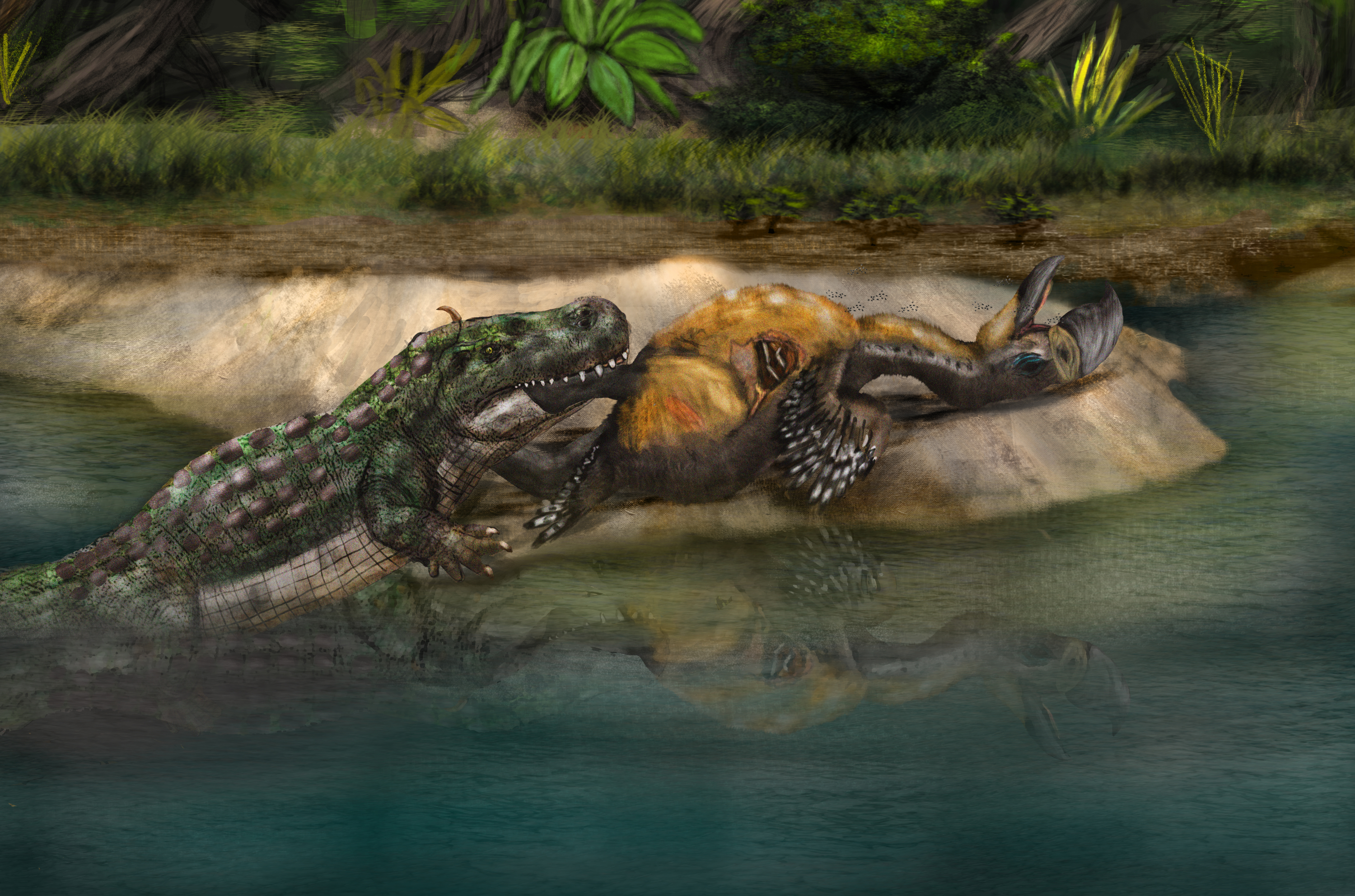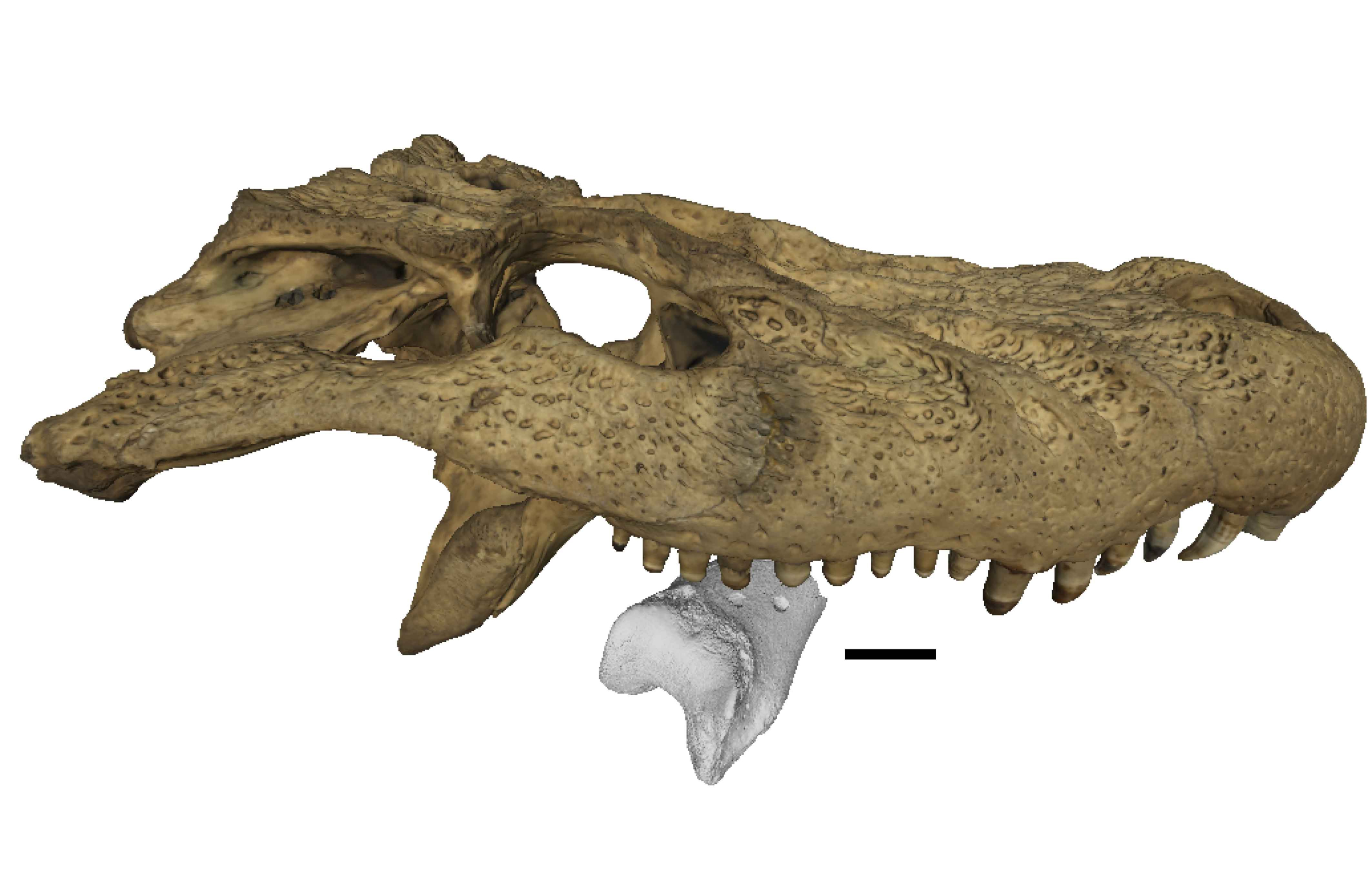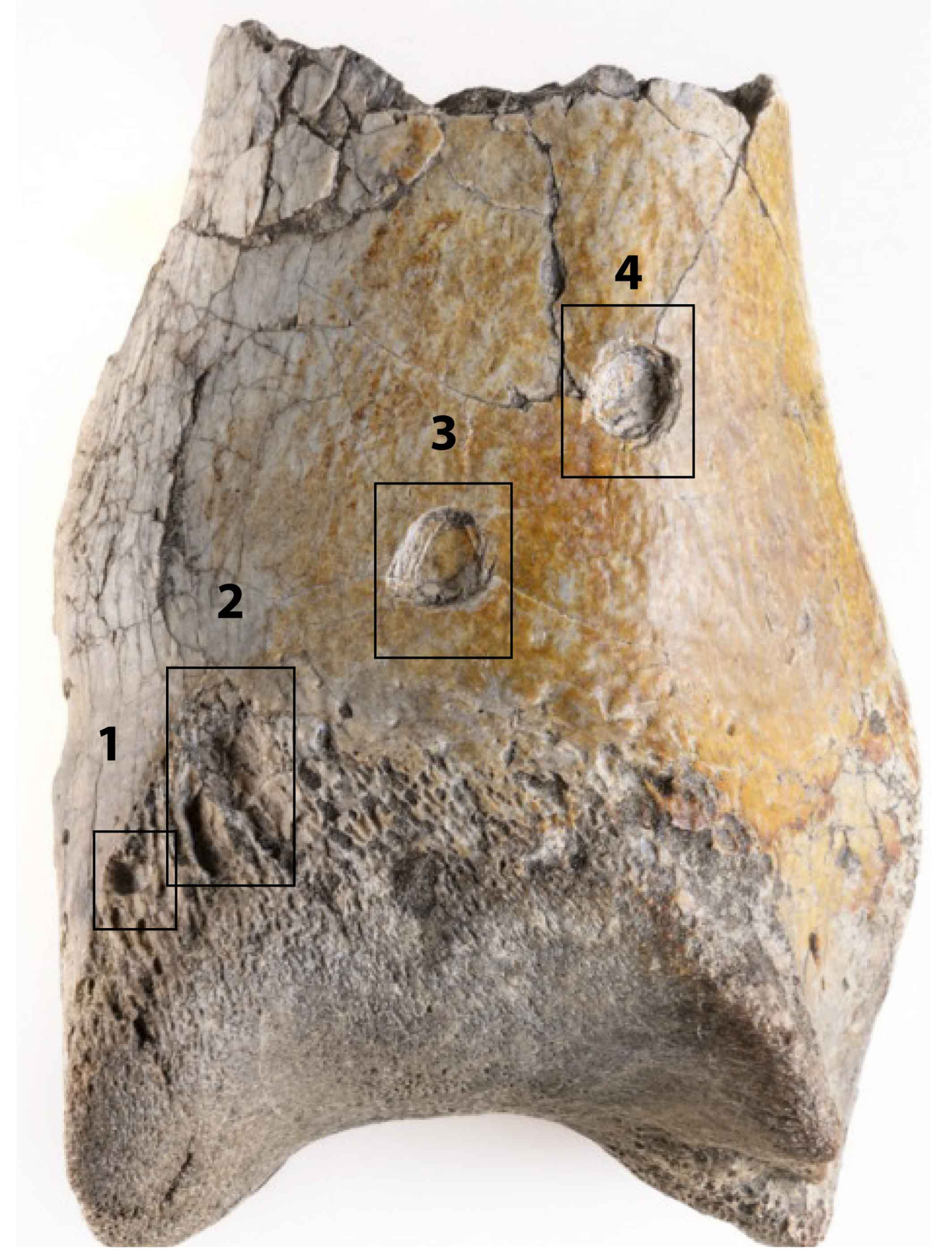The mystery surrounding the death of the first 'terror bird' found in Colombia has been solved: it was allegedly eaten by another giant animal.

Last year, Colombian researchers revealed the discovery of a piece that until then had been lost to the history of Latin American paleontology: the first record corroborating that terror birds were indeed present in northern South America . Until then, remains of phororhacids (Phorusrhacidae)—as this family of extinct birds is known—had only been found in what millions of years ago were vast grasslands far from the tropics.
To this important discovery, new information has now been obtained about what life and, above all, death was like for this animal in what is now Colombia. A new study, published in the journal Biology Letters , delved into the evidence surrounding some marks found on the fossil fragment of the terror bird that was found in the collection of the Storm Museum , in the Tatacoa Desert, which indicated that this bird had received a bite from an extinct animal that could have caused its death .
Searching for clues to shed light on events that occurred some 12 million years ago, the researchers compared the fossil's markings with previous work by taphonomists—the science that studies the events that may have affected an organism from its death to its discovery as a fossil—on bite marks on bones and the conditions under which they may have occurred, depending on the characteristics found in the fossils.

Depiction of the encounter between the Purussaurus neivensis and the terror bird. Photo: Julián Bayona Becerra
Those found in the terror bird fossil, for example, are a series of oval-shaped depressions, which, according to Jorge W. Moreno Bernal, a doctoral candidate at the Universidad del Norte and one of the authors of the publication, correspond to a hard object that sank into the bone. " These bites are exactly like crocodile bites because they are oval-shaped, with small notches on both sides that correspond to the ridges found on crocodile teeth. What Luis Gonzalo Ortiz-Pabón and Siobhan B. Cooke did, along with other researchers who participated in the study, led by Andrés Link, a professor at the Universidad de los Andes, was scan the surface of these bones to produce 3D models," he explains.
This 3D model allowed the scientists to identify that what they were observing on the bone was a row of marks on the bone's shaft very similar to those left by a single, forceful bite, consistent with the way crocodiles process what they eat. "A crocodile grabs a leg or paw and pulls, shakes, or twists it. It's not like a dog biting the bone and damaging it from gnawing," Moreno Bernal says.
Furthermore, the researchers were able to establish that the bite had occurred when the terror bird was already dead, as they found no signs of healing in the bone , and that, most likely, what happened was that the crocodile was trying to transport its prey. "If it had been an attack bite, it would have caused a larger break in the bone. The bite doesn't pierce the cortical tissue. It is produced with a lot of pressure, but also with great precision. That's why we think that 'El Paco,' as we affectionately call him, was already dead and it's very likely a transport bite or even a scavenging bite," explains Luis Gonzalo Ortiz Pabón, co-author of the study, a graduate in Biology from the National Pedagogical University and a master's student in Biological Sciences from Uniandes.

3D model of the fossil, superimposed on the skull of a modern black caiman, about 4.5 meters long. Photo: Jorge W. Moreno Bernal
Crocodiles are, in fact, very common in the fossil fauna found at Tatacoa in the century that this site has been studied. “This is one of the most important fossil sites in Colombia because, for a long time, the Cenozoic Era, which is the period from the time after the dinosaurs became extinct until today, was known primarily from locations in Patagonia, far to the south, and what was happening here in the tropical region was not as well known,” explains Moreno Bernal.

Bone of the terror bird showing the four bite marks. Photo: Jorge W. Moreno Bernal
Studies at Tatacoa had shown that at that time, two large groups of carnivores predominated in this part of the continent: crocodiles, some now completely extinct and others cousins of today's alligators and caimans; and sparassodonts, cousins of marsupials. Since the former were larger, it had been suggested that they were the main carnivores in that ecosystem, a fact that changed with the discovery of the terror bird.
The fact that the terror bird and the Tatacoa crocodiles coincided makes the Cenozoic picture much more complex. "This bird bone they discovered—along with others that specialists are currently studying—tells us about a very large animal, a bird weighing about 350 kg, like an ostrich, with a shorter neck and a very large eagle's head, with a very strong beak. The relationships between these types of carnivores are complex. What we found is that another carnivore was eating that large carnivore," says Moreno Bernal.
Furthermore, this is the first time that an encounter between these two animals has been identified in the fossil record. "There is a similar interaction in older deposits in Patagonia (about 40 million years ago), with a bone from a smaller bird species, which was consumed by a mammalian cousin of the opossums," says Moreno Bernal, who adds that the evidence of this encounter left bite marks more similar to those a dog would make on a bone.
Regarding what the Tatacoa crocodile looked like, researchers were able to determine that it was an animal from the same family as the black caimans of the Amazon, the babillas and the cachirres, whose rear teeth are not sharp .
According to Moreno Bernal, among the crocodiles that inhabited this ecosystem 12 million years ago, the only one that corresponds in size to an animal capable of leaving marks like those found on the terror bird fossil is the famous Purussaurus neivensis , a gigantic alligator, about four meters long, whose species can reach up to eight meters.
eltiempo





